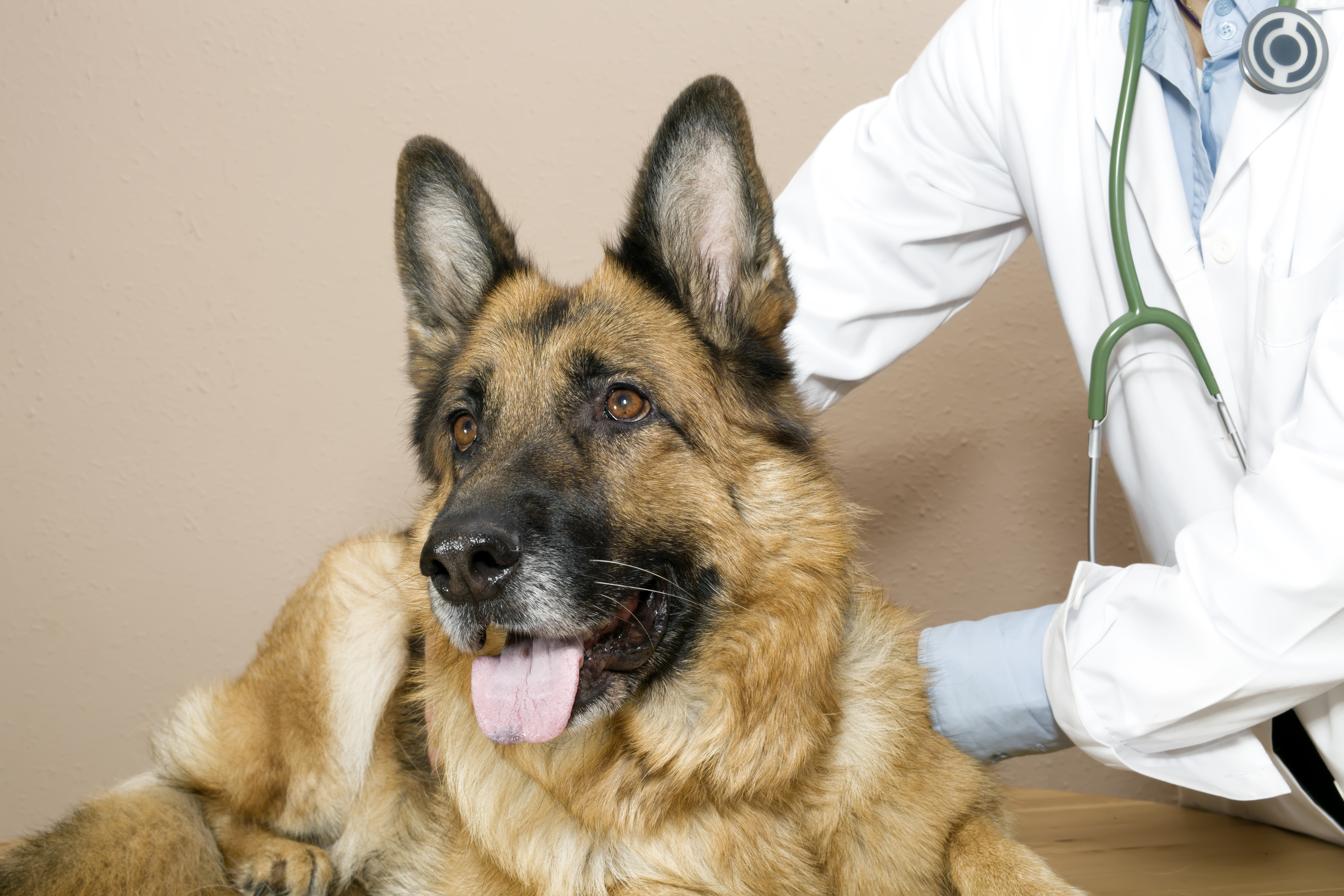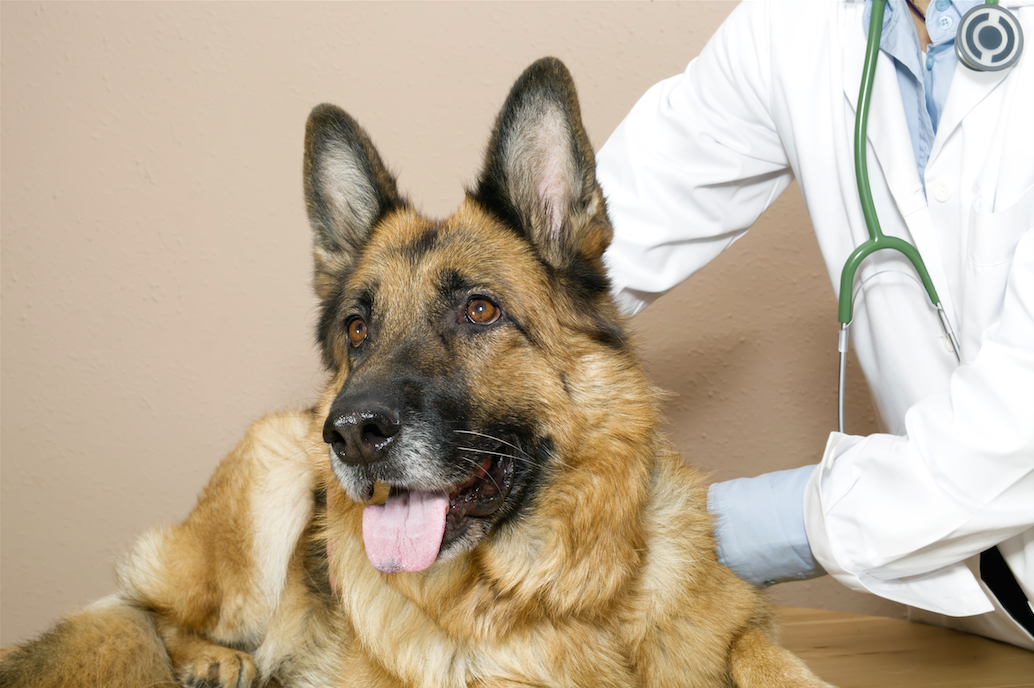10 Dog Breeds That Vets Don’t Recommend

Contents of Article
There’s always lots of talk about whether purebred dogs are healthy or if you are better off getting a mixed breed dog. The truth is that dogs are individuals. Even among breeds that frequently have health problems, you can find dogs that are very healthy and live long lives.
You can find mutts that live forever and some that seem to inherit all kinds of health problems from their unknown parents. And you can get a dog from ancestors that have been health-tested for generations and the poor dog can still end up with genetic problems.
There are no guarantees with dogs when it comes to health.
However, you can improve your odds of having a healthy dog. Some breeds and mixes are particularly known for having a higher risk for some health problems.
Some breeds can be subject to multiple health problems even though they might be minor problems. You can often find long lists of health issues for different breeds online. You should mostly ignore these lists and only look at serious health issues.
Every living creature is subject to various health and genetic issues. It doesn’t take much effort to come up with these lists. In many cases some of the health problems discussed only occur very rarely in the breed; they are very minor problems; or they can affect all dogs. Sometimes you have to know a lot about dog breeds to know the difference between a serious problem and minor issues and the people who create these lists online often don’t qualify.
Serious issues affect a dog’s quality of life. They noticeably shorten a dog’s lifespan. They would be particularly common in the breed compared to other breeds or mixes. And cures or treatments would be costly or non-existent.
Also Read: Dog Adoption
Breeds with Higher Than Average Risk for Health Problems
Here are some breeds that veterinarians often do not recommend, based on their possible health problems and the expensive veterinary costs associated with them.
1. Great Danes
Lifespan: about 8 years in the U.S.
Nicknamed the “Heartbreak Breed,” Great Danes are a giant breed and very large dogs tend to have a shorter lifespan than small and medium-sized dogs just because of their size. The Great Dane, with its deep chest cavity, is also some 40 times more likely to experience bloat (GDV) than the average mixed breed dog. Bloat is a life-threatening condition that occurs when gas or air builds up in the dog’s stomach and it twists, cutting off the blood supply. Without emergency treatment, the dog can die. Even with immediate treatment, a large percentage of dogs still die. Great Danes can also have dilated cardiomyopathy (DCM) in which the heart muscle becomes weakened and enlarged.
2. Akitas
Lifespan: 11-15 years in the U.S.
Another large breed, Akitas are also prone to bloat. They can also have joint problems such as cruciate ligament injuries which often require expensive surgery to repair. Other breeds at high risk for cruciate ligament injuries include Labrador Retrievers, Newfoundlands, German Shepherds, Rottweilers, and Golden Retrievers. Any dog that participates in very active sports can have ligament injuries, but these breeds seem to be especially prone to them.
3. French Bulldogs
Lifespan: 10-12 years in the U.S.
Although French Bulldogs are becoming more popular all the time, this is a breed that can have a number of health problems due to being a brachycephalic (short-nosed) breed. They can be more prone to some respiratory problems. Certain congenital breathing problems can require expensive surgery to correct.
4. American Pit Bull Terriers
Lifespan: up to 15 years in the U.S.
While some people fear “pit bulls” and associate them with dog fighting, the American Pit Bull Terrier is registered with the United Kennel Club. They have many devoted fans. At the same time, “pitties” can have some costly veterinary problems. Hip dysplasia can be a serious problem in the breed, with some dogs needing very expensive surgery to maintain quality of life or a dog may need to take medication for pain for the rest of his life.
5. Rottweilers
Lifespan: 8-10 years in the U.S.
Rottweilers are another large breed that tend to have problems with hip dysplasia. Cancer is also a serious problem in the breed. While cancer, in general, is the number one cause of death in dogs, it appears to strike many Rottweilers at a young age. It may be treatable with chemotherapy but it’s expensive. Some Rottweiler owners and their dogs have taken part in a longevity study to try to help dogs in the breed live longer so perhaps they will find some answers.
6. Doberman Pinschers
Lifespan: 10-13 years in the U.S.
Doberman Pinschers are another breed that can suffer from dilated cardiomyopathy (DCM). They can also have cervical vertebral instability (also known as cervical stenosis or Wobbler syndrome). Von Willebrand’s disease, a bleeding/clotting disorder, can occur in Dobermans but it is not particularly common. There is also a genetic test available to detect this gene.
7. Bernese Mountain Dogs
Lifespan: 6-8 years in the U.S.
Bernese Mountain Dogs are another very large breed with a relatively short lifespan. They often have bone and joint problems and cancer is a problem in the breed. Treating these conditions tends to be expensive.
8. German Shepherd Dogs
Lifespan: up to 13 years in the U.S.
German Shepherds are beloved by many, but the breed does have some serious health problems. If you are interested in these dogs, you should be aware that health problems are possible and do your best to get a dog from a careful breeder. Orthopedic problems, degenerative myelopathy, epilepsy, eye problems, sensitive digestion, and other issues are all present in the breed. Bloat is also an issue for Sheps.
9. Golden Retrievers
Lifespan: 10-12 years in the U.S.
Yes, we know that Golden Retrievers are one of the most popular dogs in the U.S. They are also one of the breeds most affected by cancer. According to one study, 61 percent of Goldens die from cancer. Lots of dogs die from cancer – it’s the number one killer of adult dogs. But Golden Retrievers are particularly susceptible, it seems. The lifespan of the breed in the U.S. has gone from 16-17 years down to less than 10 years in the last 40 years. We love this breed – who doesn’t? But if you get a Golden, cancer is something you may have to deal with sooner rather than later, at least until some answers are found.
10. Bulldogs
Lifespan: 8-10 years in the U.S.
The adorable, wrinkled Bulldog – one of the most popular breeds in the United States – is also one of the most expensive to care for in terms of veterinary costs. They are a brachycephalic (short-nosed) breed, so they can have respiratory problems. They also tend to have terrible hips, with the worst hips in the Orthopedic Foundation for Animals (OFA) database. More than two-thirds of the Bulldogs x-rayed were found to be dysplastic.
(Dr. Marty Becker adds the Pug and the French Bulldog (mentioned above) to a list of breeds, along with the Bulldog, that he would like to see less of, as a veterinarian, due to their breathing problems.)
These are all wonderful breeds. If you are interested in one of these breeds, we don’t wish to discourage you from seeking more information about them. But you should be aware that some individuals can have health issues that require costly treatment. And it’s not just purebreds. If you get a mixed breed dog from a shelter or rescue that resembles one of these breeds, the dog could share some of the same health problems. The same genetics that make a mixed breed look like a Golden Retriever or a Rottweiler can also pass along some of the same health issues.
Pet Health Insurance for Unhealthy Dogs
If you are interested in a breed that might be prone to expensive health problems, one way you can off-set some of the costs is by using pet health insurance.
Pet health insurance has been around for a few decades. It is currently more popular in Europe than in the U.S. but it is gaining in popularity here.
Pet health insurance is not quite like human health insurance. It’s designed to be more like your car or home insurance in most cases. You choose a policy for your pet, select the options that you want (which can vary widely depending on how much you want to pay per month on your policy), and continue paying to keep it current. If you need to make a claim, you will probably have to pay out of pocket at your vet’s office until you meet your deductible, though some policies have co-pays and other aspects that are similar to human coverage. Then submit your claim (usually online) to your pet insurer, and you should be reimbursed in a few days. The percentage of reimbursement depends on your policy and the insurer. Some insurers reimburse as much as 90 percent of a claim, while others reimburse a lower percentage.
Some people like to have a basic pet insurance policy and add coverage for accidents and illness. They pay for ordinary things like vaccinations and exams but the insurer covers more costly treatments, should they be necessary. Or, you can have vaccinations and exams included in wellness visits covered under a policy.
Just as with other kinds of insurance, the lower your deductible, the higher your premiums (monthly payments) will be. If you have a very high deductible, your premiums will be lower.
If you choose a deluxe insurance policy for your pet, with everything covered, your policy is likely to be expensive. But if you are more selective and only choose things your pet might need in more serious situations (illness, accidents), your policy can be quite affordable.
Some of the top-ranked pet insurance companies today include HealthyPaws, Petplan, Trupanion, Pets Best, and Embrace.
What’s covered – and what’s not?
If you are considering pet health insurance, be sure to read the policy options carefully. Most policies will not cover pre-existing conditions but some do. So, find out if congenital or hereditary conditions are covered. You will want to find out if there is an annual deductible and how much it is. You will also want to know if there is a benefit limit – and, if there is, how much is it? If your dog has cancer, for example, and requires chemotherapy or surgery, having a benefit limit would be important to know. If there is a wellness plan, you would want to know if it covers something like spay/neuter surgery or dental cleanings.
Pets Best does a good job of explaining how their policies work on this blog page. You should be able to find similar information for every pet insurance company.
Before choosing any pet insurance company it’s a good idea to check them out online. Read reviews from current customers. This can tell you if the company pays claims quickly and how they do business. You don’t want any unpleasant surprises when you’re at the vet’s office with your dog.
Petinsurancereview.com is a great site for comparing companies, policies and getting other pet insurance information.
Pet health insurance is not just for high risk breeds. You can purchase it for any dog or cat. Some companies also cover birds and other pets.
Depending on your pet and your personal situation, it can be a good choice today, especially with veterinary costs rising. As veterinary care advances and brings more and more treatments designed for humans into the vet hospital, the cost of pet care will continue to increase. It costs more to use MRIs and chemotherapy on pets than it used to cost to give simple palliative care to make the dog feel better.
Even if your dog simply needs an ongoing prescription for a chronic condition, the costs can add up. Many of us can’t pay these costs out of pocket. We need something like pet insurance to help pay if we want to try to save our pets when they need us.















